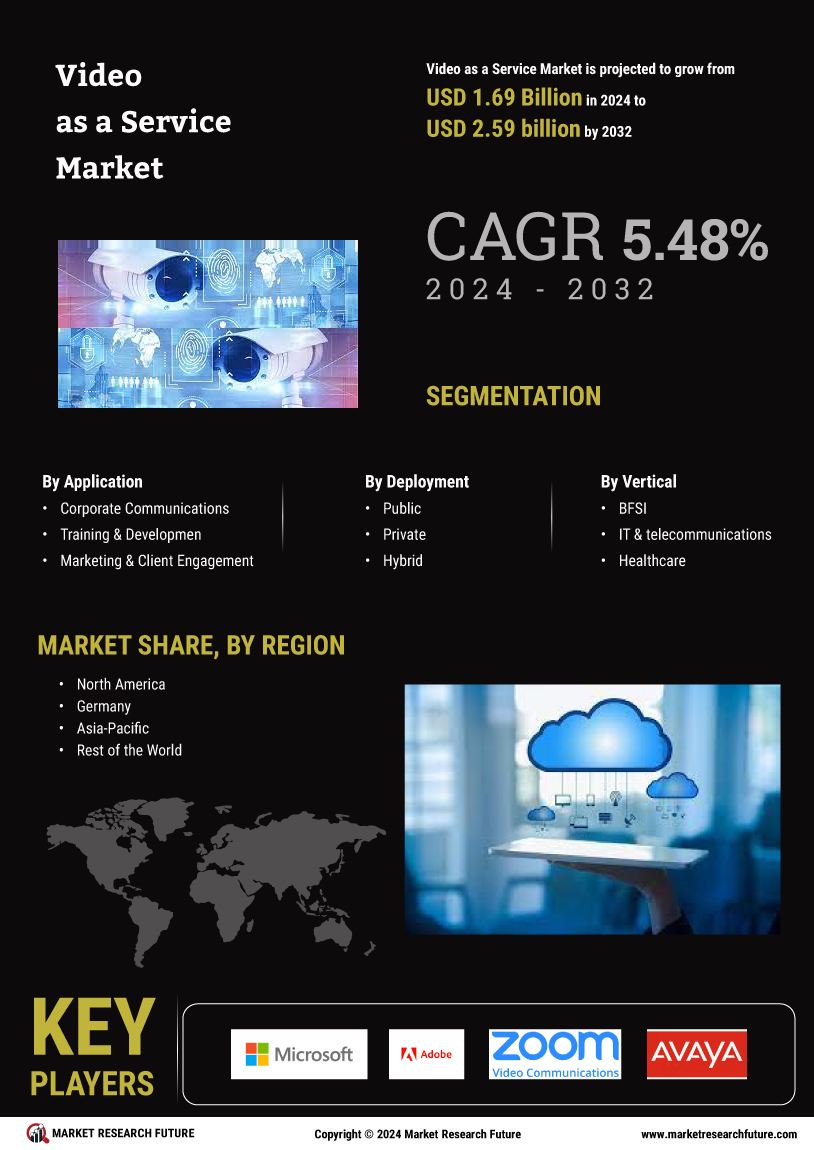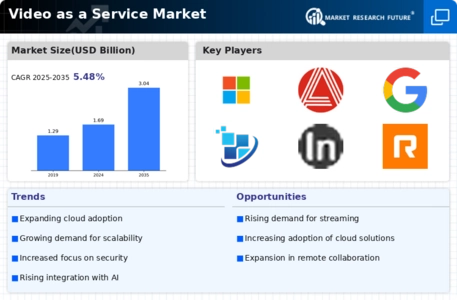Market Growth Projections
The Global Video as a Service Market Industry is poised for substantial growth, with projections indicating a market size of 1.69 USD Billion in 2024 and an anticipated increase to 3.04 USD Billion by 2035. This growth trajectory reflects a compound annual growth rate (CAGR) of 5.48% from 2025 to 2035. The increasing reliance on video communication across various sectors, coupled with advancements in technology and cloud solutions, underpins this positive outlook. As organizations continue to embrace video as a core component of their operations, the market is likely to expand, presenting opportunities for innovation and investment.
Increased Focus on Customer Engagement
Enhancing customer engagement through video content is becoming a strategic priority for businesses, significantly impacting the Global Video as a Service Market Industry. Companies are utilizing video for marketing, customer support, and training, recognizing its effectiveness in conveying messages and fostering connections. This trend is likely to drive market growth as organizations seek to differentiate themselves in competitive environments. The integration of interactive video features and analytics tools further supports this focus, enabling businesses to tailor their approaches based on viewer behavior. As a result, the demand for sophisticated video solutions is expected to rise, contributing to the overall market expansion.
Rising Demand for Remote Collaboration
The Global Video as a Service Market Industry experiences a surge in demand for remote collaboration tools. As organizations increasingly adopt hybrid work models, the need for seamless video communication solutions becomes paramount. In 2024, the market is projected to reach 1.69 USD Billion, driven by the necessity for effective virtual meetings and team interactions. Companies are investing in video platforms that offer high-quality streaming and user-friendly interfaces. This trend indicates a shift towards integrated solutions that enhance productivity and engagement, suggesting that the industry will continue to grow as remote work becomes a permanent fixture in many sectors.
Growing Adoption of Cloud-Based Solutions
The shift towards cloud-based solutions is a pivotal driver for the Global Video as a Service Market Industry. Organizations are increasingly recognizing the benefits of cloud technology, including scalability, cost-effectiveness, and ease of access. This transition allows businesses to deploy video services without the need for extensive on-premises infrastructure. As a result, the market is anticipated to grow at a CAGR of 5.48% from 2025 to 2035. The flexibility offered by cloud solutions enables companies to adapt quickly to changing demands, suggesting that this trend will continue to influence the market positively in the coming years.
Regulatory Compliance and Security Concerns
Regulatory compliance and security are increasingly influencing the Global Video as a Service Market Industry. As organizations handle sensitive data through video communications, the need for secure and compliant solutions becomes critical. Companies are prioritizing platforms that adhere to data protection regulations and offer robust security features. This focus on compliance is likely to drive investment in video services that provide end-to-end encryption and secure access controls. As the market evolves, addressing these concerns will be essential for providers to gain trust and maintain competitiveness, suggesting a sustained emphasis on security measures in the industry.
Technological Advancements in Video Streaming
Technological innovations play a crucial role in shaping the Global Video as a Service Market Industry. The advent of high-definition video streaming, artificial intelligence, and machine learning enhances user experiences and operational efficiencies. These advancements allow for improved video quality, reduced latency, and personalized content delivery. As companies leverage these technologies, the market is expected to expand significantly, with projections indicating a growth to 3.04 USD Billion by 2035. This growth may be attributed to the increasing reliance on video content for marketing, training, and customer engagement, highlighting the importance of staying ahead in a competitive landscape.

















